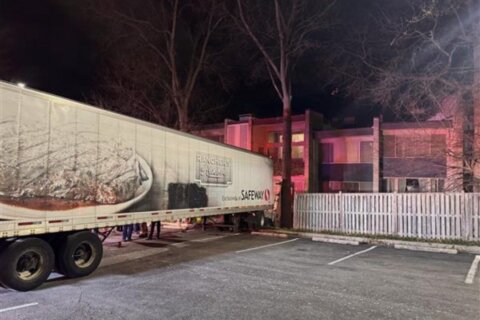Montgomery County, Maryland, police are encouraging more students to say something, if they see something after a student at Walter Johnson High School was arrested Monday for bringing a gun to school.
Security was notified by another student that Akram Nassir, 17, of Bethesda, had a gun while in school on Monday. He has since been charged as an adult with underage possession of a firearm, possession of a loaded handgun and possession of a dangerous weapon on school property.
“He saw something happen in a room at the school. He doesn’t know the other party involved at all,” said Cpt. Jordan Satinsky with Montgomery County police. “And he took a second to think and then he went and told a trusted adult security staff member who then started this whole other process of getting us involved.”
Satinsky encouraged all students to feel emboldened and comfortable to say something when they see something.
As part of the Community Engagement Officer 2.0 program’s implementation, officers were not on campus, but were dispatched quickly to respond. The CEO program allows officers to have a designated work station at schools — such as in a principal’s office — but does not allow officers to be stationed in schools permanently or to patrol the hallways.
Meanwhile, school security went back and looked at hallway cameras and identified two students that were suspected of having a weapon. Both students were then brought in. While security was finishing the search on the first student, a sergeant and a community engagement officer arrived and noticed the other student’s body language.
“This officer has been a police officer for almost 20 years. And he’s been in … either this position or another, dealing with mental health for a long, long time. He instantly recognized that something was wrong. And the kid was grabbing for something. So the officer is actually the one who got the gun in the end,” Satinsky said.
On social media, some parents applauded this response, giving credit to the CEO 2.0 program, while others said this is an example of why officers should be on campus.
Satinsky said officers are now covering 12 to 13 schools each, so the ability for them to create those good relationships that foster communication is much more difficult.
“The former SRO program really was devoted to developing those relationships, mentorships and diverting, and providing services to juveniles who really needed that, who couldn’t get them in other arenas. In the current program, it’s more of a reactive patrol model. We’re not making those same levels of relationships. So I’ll be honest, we are missing out on some things,” Satinsky said.
Parents can play an important role in teaching their students at home the importance of speaking up. With kids having easy access to guns, especially ghost guns, Satinsky said parents should be checking up on what their child is doing while at home.
“If your kid suddenly wants a 3D printer, ask why. I mean, I think that’s very important,” he said. “And don’t be afraid to knock on that door and go in there and say, ‘Hey, what are you doing with that printer?’ Remember, it’s our job as parents to give them the best model behavior moving forward. And simply just ignoring it doesn’t help,” Satinsky said.







